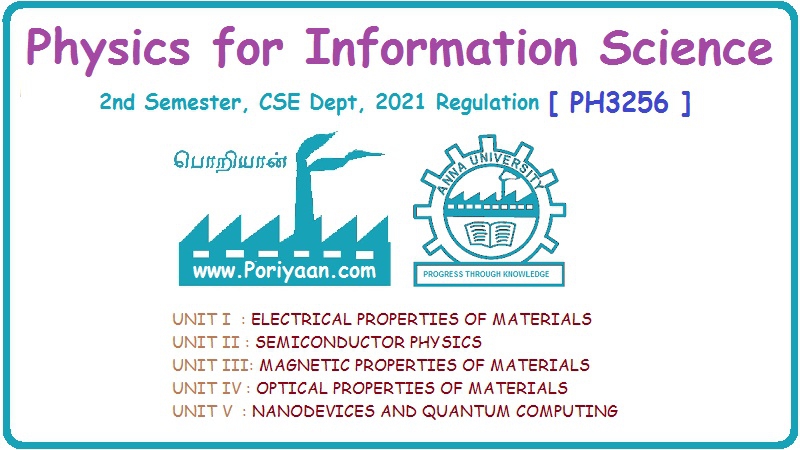Physics for Information Science: Unit IV: Optical Properties of Materials
Holography
Definition, Types, Construction, Reconstruction, Working Principle, Precautions, Applications
The word "Holography" is derived from a greek word. In greek 'Holos' means 'whole' and 'graphein' means 'to write', in other way we can say 'graphy' means 'recording'.
HOLOGRAPHY
Introduction
The
word "Holography" is derived from a greek word. In greek 'Holos'
means 'whole' and 'graphein' means 'to write', in other way we can say 'graphy'
means 'recording'. Therefore Holography means recording the complete
information about an object in a holographic plate (similar to a photographic
plate).
We
know, in Photography if we want to take photograph, we have to illuminate the
light over the object. Then the light reflected from the object has to be
focussed onto the photographic film with the help of a lens system in the
camera. This give rise to a real image of the object in the form of a negative.
Thus, after washing and developing the negative, we will get a 2-dimensional
image of the object.
Holography
Holography
is similar to the photography technique, in which we can construct a
3-dimensional image of an object using a laser beam. That image is called as a
Hologram. In this hologram we can see the front, side and top etc., portions of
the object, similar to what we see in video games (or) 3D-films.
Types of holographic techniques
There
are different holographic techniques by which we can make holograms. They are
(i)
Optical holography.
(ii)
Acoustical holography.
(iii)
X-ray holography.
(iv)
Microwave - holography.
(v)
Double expanded holography.
(vi)
Real time holography.
(vii)
Time average holography.
Let
us discuss the construction and reconstruction of a hologram by optical
holography using laser beam.
Construction of Hologram
Principle
Two
beams, viz one from the object (object beam) and the other from the laser
source (reference beam) are super imposed on a holographic plate to form an
image called hologram.
Working
A
monochromatic source of Laser is made to fall on a beam splitter (B) with the
help of a condensing lens (C). The beam splitter splits the incident beam into
two beams viz,
(i)
Reference beam (R) and
(ii)
Object beam (O) as shown in Fig. 4.29.
The
reference beam will directly fall on a holographic plate and the object beam
after getting scattered by the object will fall on the holographic plate.
Therefore
the two beams i.e., the reference beam and the object beam will interfere with
each other and the interference pattern is recorded on the holographic plate.
This on developing and processing we get a hologram.
Precautions
During
the construction of a hologram, the following precautionary measures has to be
taken.
(i)
The distance travelled by the reference beam and the object beam should be
almost equal.
(ii)
Ratio of light intensity between the reference beam and object be should be
3:1.
(iii)
Total darkness should be maintained, while loading the holographic plate.
(iv)
The total setup has to be kept in a vibration less table, to avoid vibrations
due to the natural seismic vibrations of the Earth.
Reconstruction of a Hologram
Principle
A
beam of light (reading beam) having the same wavelength as that of the
reference beam [used for construction] is made to fall over the hologram during
reconstruction. This beam is diffracted by the hologram, which inturn gives
rise to a 3-dimensional image in the field of view.
Working
During
the reconstruction process, the object is first removed and the laser beam is
switched ON. The laser light (reference beam) will now act as a reading beam (RB).
This reading beam is made to fall on the hologram as shown in Fig. 4.30.
Now,
due to diffraction, the observer can clearly see a 3-dimensional image through
the hologram. Here, the image appears as if the object is really present.
Therefore, the observer can move his head side wise or change the position of
the eye ball, so that he can enjoy the fully view of the image. Hence the hologram
isreconstructed..
Precautions
The
following precautionary measures are followed during the reconstruction of a
hologram.
(i)
The object should be removed carefully.
(ii)
The reading beam should have same wavelength as that of the reference beam.
(iii) Hologram should not be disturbed.
Note:
While reconstructing the hologram, it is not so that laser light alone should
be used. Instead we can use any other monochromatic sources like sodium vapour
lamp (or) ordinary beam, with the condition that it should have same wavelength
as that of the reference beam used for constructing the hologram.
Applications of holography
1.
They are used in the production of holographic stickers.
2.
Holography can be used in non-destructive testing.
3.
It is used in the identification of finger prints.
4.
It is also used in data processing, optical signal processing etc.
Physics for Information Science: Unit IV: Optical Properties of Materials : Tag: : Definition, Types, Construction, Reconstruction, Working Principle, Precautions, Applications - Holography
Related Topics
Related Subjects
Physics for Information Science
PH3256 2nd Semester CSE Dept | 2021 Regulation | 2nd Semester CSE Dept 2021 Regulation
